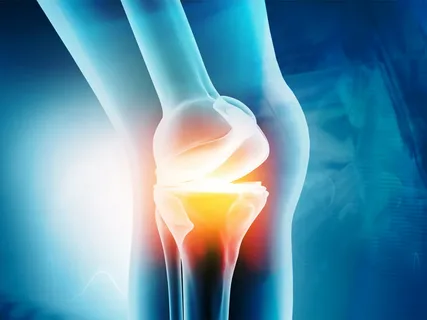Contents
Summary
- Shin splints can be very painful, but the misconception around them is that shin splints only happen to athletes.
- We will dispel some of the rumours around shin splints for a healthy lifestyle and share with you some ways that you can avoid them.
- What are shin splints?
- What are the causes of shin splints?
- The muscles are affected when you get shin splints.
- Learn how to plan workouts to avoid shin splints.
- Discover how the best joint pain supplements can help ease the condition.
What Are Shin Splints And Why Do They Happen?
The name is fairly plain and indicative of what happens when you get a shin splint. Shin splints are defined as pain in the lower leg area between the ankles and the knees. They often involve a pain that runs the length of your shin bone, also known as the tibia. In the medical world, shin splints are referred to as medial tibial stress syndrome because they mainly involve the tibia.
Shin splints are usually associated with rigorous exercises like running and various contact sports such as football, soccer, and basketball. The cause of shin splints is muscle inflammation. When the tibia is subjected to rigorous strain, this inflammation can occur. But shin splints don’t happen to every athlete, so why is that?
Shin splints mainly occur when a person does not properly stretch out before and after exercise. That’s why knowing how to plan workouts, both before and after exercising, is so important. If you don’t get your tibia loose and limber before working out, you run a greater risk of developing shin splints.
Of course, shin splints can still occur even if you are properly stretched out. That’s because another cause of shin splint is a change in your workout regimen. When you switch from one type of exercise that your body is used to, to another, it may cause a painful strain on your tibia.
The Muscles Involved In Shin Splints
The muscles that are most commonly affected by shin splints are called the tibialis anterior and the tibialis posterior. Both of these are very lean muscles that run up and down the back and front of your tibia (your shin bone).
What happens is that these 2 muscles are strained under vigorous exercise and pull apart from the tibia. This pulling and stretching out of the muscle and connective tissue create inflammation, which in turn is what causes the pain associated with shin splints. While exercise is considered a crucial part of a healthy lifestyle, and the best joint pain supplements will help relieve any pain that you sustain, it’s important to know how to exercise to avoid injury in the first place.
5 Stretches That Will Help You Avoid Shin Splints
-
Achilles Stretch
While sitting on the floor, hold one leg straight while bending the other at the knee. You can use an exercise band or a belt for this exercise. Wrap the band or belt around your foot that you have stretched out straight and pull your foot toward you, bending at the knee with the belt/band. This is an effective way to stretch your Achilles tendon, which can help strengthen the shin muscles.
-
Toe Stretch
This one involves standing up straight and dragging the top of your toe across the ground for a short length. Keep one leg straight and bend the foot of the other so the top of your big toe is making contact with the ground. Then, move your bent leg forward until you can feel a stretch from your foot (the top part) reaching to your shin. Repeat this stretch for both legs or as needed.
-
Sitting Toe Stretch
This one is very similar to the previous stretch but you can sit in a chair and do it. While seated in a chair, drop one knee off the chair so that the top of your big toe is making contact with the ground. Then, just like the last stretch, drag your toe forward until you can feel a stretch from the top of your foot into your shin. Repeat for both legs.
-
Calf Stretch
You can lean up against a wall for this one with one leg kept straight behind you and another leg bent forward towards the wall to support your weight. Bend on the forward leg until you feel a stretch in the calf of the leg that you are holding straight and behind you.
-
Toe Stands
Stand up straight, with your legs stretched apart at about shoulder length. Then, rise on the ball of your feet (so that your heels are in the air behind you). This should produce a stretch in your calves and your shins. When your heels are raised, count to two and then lower them.
Using Joint Pain Supplements to Treat Shin Splints
There may still be times when despite stretching properly, you could still experience a shin splint and need to use a product to alleviate the pain.
The best joint supplements are those that support the body’s response to inflammation, as this will give you the long-lasting results you need. These supplements should contain ingredients that are high in anti-inflammatory agents, antioxidants, and collagen-boosting properties.
Brands such as Relief Factor are designed to do this using a blend of natural extracts that include Turmeric and Omega-3 fish oil.
Final Advice
The stretches listed above not only prepare your body and help you get the most benefits of exercise, but they can help prevent painful shin splints. If you already have shin splints, however, consider using a natural anti-inflammatory product like Relief Factor, but always talk to your doctor first about the different options available to you.
The benefits of exercise cannot be denied and should not be neglected so long as your body can tolerate it. Doing these stretches is a great way to strengthen your shin muscles, avoid tendon inflammation, and to keep you healthy and active for years to come.



